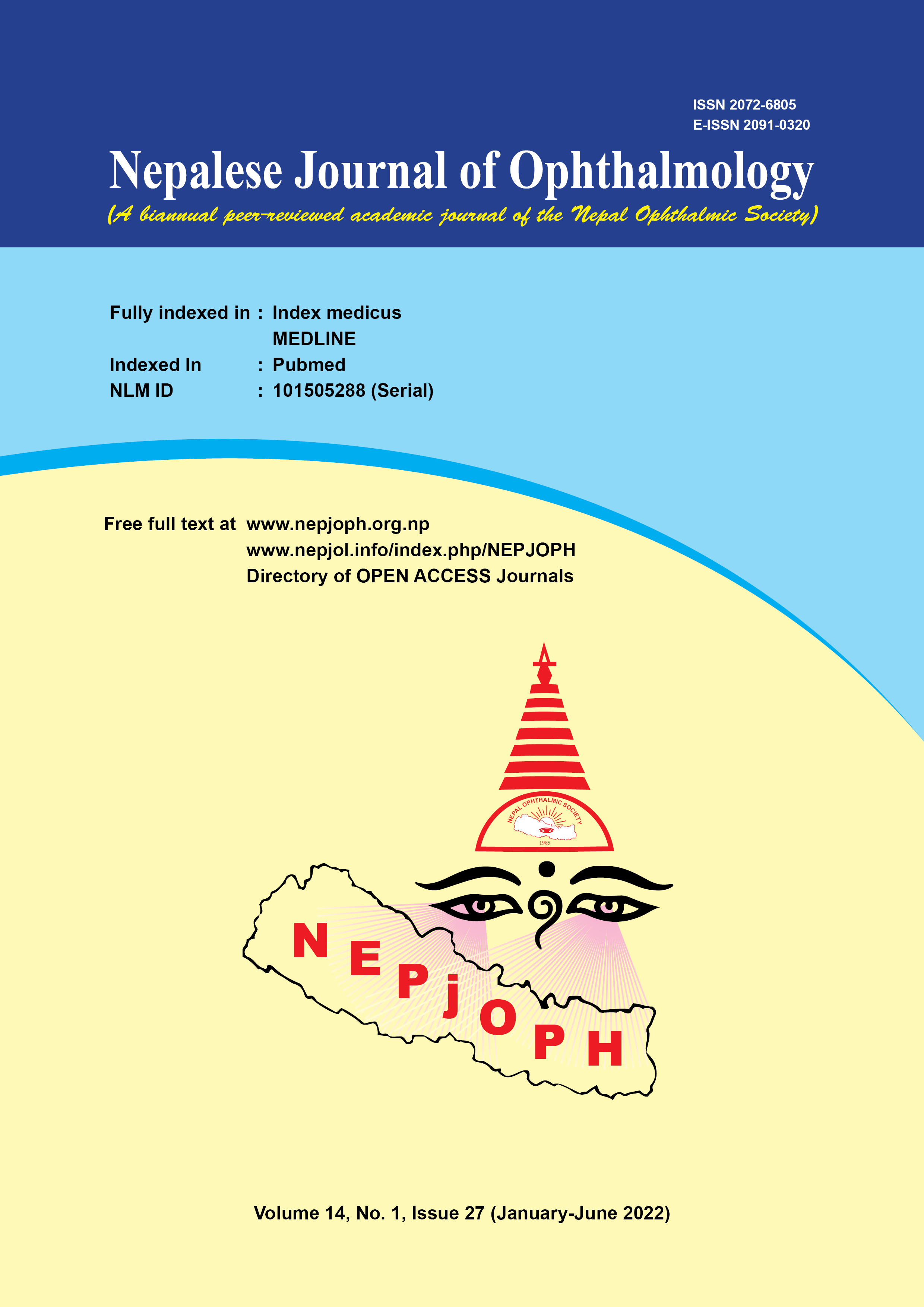Conjunctival Relaxing Incisions with a Bare Bed: An Overlooked Privilege in Contracted Sockets
DOI:
https://doi.org/10.3126/nepjoph.v14i1.29240Keywords:
Conjunctival relaxing incision, Contracted socket, Dermis-fat graftAbstract
Introduction: The aim of reconstruction of a contracted socket is to retain a satisfactory prosthesis. Simple procedures to modify the socket architecture as first line options could avoid multiple staged procedures, increased surgical time, harvesting tissues or use of allografts. The objective of this study was to evaluate the outcome of modifying the socket architecture by making conjunctival relaxing incisions leaving it bare to re-epithelialize and compare it to dermis-fat graft.
Materials and methods: A retrospective review of all socket reconstruction surgeries in our hospital over a period of 10 years (July 2009 to June 2019) was done. The two procedures which were compared were dermis-fat graft (DFG) and conjunctival relaxing incisions (CRI) without a graft. In the latter, the split conjunctiva was left bare under a conformer and temporary tarsorrhaphy. The conjunctiva was allowed to re-epithelialize under cover of topical antibiotic and steroid.
Results: The patients included had a mean age of 24 years (n=8) in the DFG group and 36 years (n=10) in the CRI group. The most common cause of anophthalmic socket was enucleation for tumour and evisceration for trauma in the two groups, respectively. Six patients (75%) in the DFG group and six (60%) in the CRI group achieved good prosthesis retention (P = 0.51). None had post-operative infection.
Conclusion: Transverse conjunctival relaxing incisions with tissue stretching can be a safe first line option to rehabilitate a contracted socket.
Downloads
Downloads
Published
How to Cite
Issue
Section
License
Copyright (c) 2022 Nepalese Journal of Ophthalmology

This work is licensed under a Creative Commons Attribution-NonCommercial-NoDerivatives 4.0 International License.
This license enables reusers to copy and distribute the material in any medium or format in unadapted form only, for noncommercial purposes only, and only so long as attribution is given to the creator.




